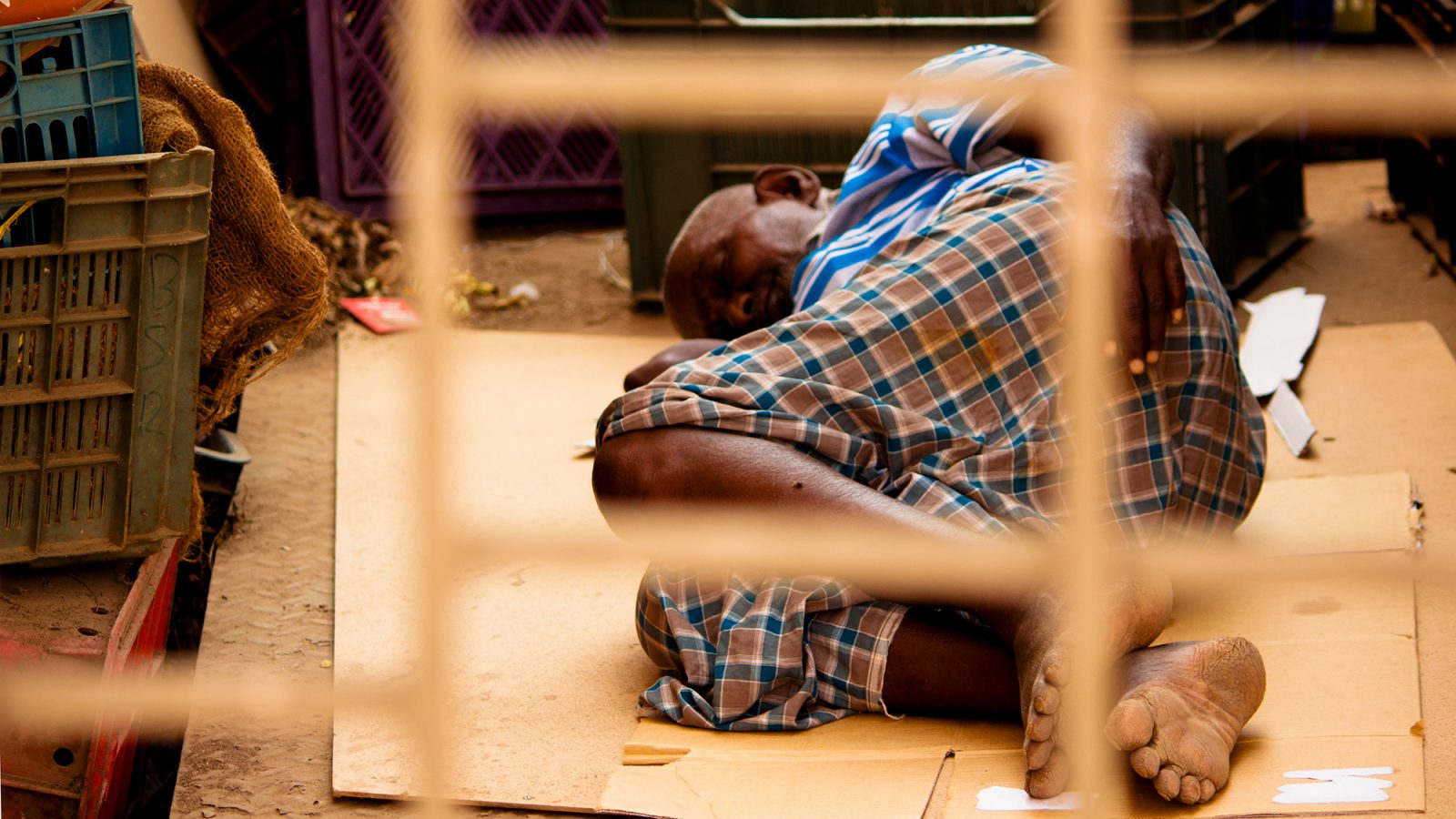
Criminalisation Leads To Exploitation: The Mumbai Story No One Knows About
In 2014, drug cases in Mumbai spiked by almost 500%, for no discernible reason. We study the data to see why, and what it can tell us about the broken justice system in India.
What happens when a poorly conceived law meets an overzealous police force and an apathetic judiciary? We study the application of Section 27 of the NDPS Act (henceforth called ‘the law’) in Mumbai to understand whether criminalisation of drug use serves its stated objective of curbing drug consumption. The law makes consumption of any narcotic drug or psychotropic substance punishable with imprisonment up to a year. We argue that this law, in effect, leads to the exploitation of the very people it purports to protect.
India’s approach to drug consumption
India sees drug consumption as a criminal offence, believing that criminalising drug use is the strongest symbol of society’s condemnation. When the NDPS Bill was being discussed in the Lok Sabha, legislators insisted that compulsory imprisonment was the only method to tackle drug addiction. VS Krishna Iyer of the Janta Party argued for deterrent punishment to addicts. Echoing his views, Priya Ranjan Dasmunshi of Congress (I) argued that imprisonment of six months for drug consumption was not sufficiently deterrent and would lead to acceptance of drug use. He insisted that for people to fear the law, incarceration for drug use should be for at least 2 years.
Later, while considering decriminalising consumption, the Standing Committee on Finance (2011-12) maintained that deterrent punishment for consumption of narcotic drugs was needed as a multi-pronged approach to fight the drug menace.But this criminalisation leads to far more harm than mere drug use could ever do.
While criminalising any activity (such as theft or assault) typically causes harm to criminals (by way of fines and imprisonment) who victimise others, criminalisation of drug use is seen as a way to protect people from themselves. This is paradoxical, because such criminalisation harms the very people it intends to protect.
To make matters worse, the writing of the law leaves much to be desired.
First, the NDPS Act puts a blanket ban on all kinds of drugs. This would include cannabis, opioids, tramadol, amphetamines, and a long list of other drugs. Theoretically, even carrying a drug for medicinal purposes, without a valid prescription on your person, could lead to your arrest. The NDPS Act prohibits production, manufacture, possession, sale, purchase, transport, use, consumption etc. of any narcotic or psychotropic substance, except for medical or scientific purpose. Consumption of a narcotic or psychotropic substance can lead to a jail term which may extend to one year.
Second, the law does not define ‘consumption’, nor does it prescribe any procedure for determining what constitutes ‘consumption’. At what stage can the ‘crime’ be considered to have been committed? Is it after the act of consumption? Is it the ongoing process of consumption? Does having consumed a narcotic or psychotropic substance at any point in your life, however many years ago, make you vulnerable to criminal sanctions for the rest of your life? For instance, in order to establish “consumption”, the police in Punjab rely on seizure of residual substances like lighter, burned match sticks, foil, and half-burnt candlesticks.
And finally, the law criminalises both problematic and non-problematic drug users. The European Monitoring Centre for Drugs and Drug Addiction defines “problem drug use” as “injecting drug use or long duration/regular use of opioids, cocaine and/or amphetamines. This definition specifically includes regular or long-term use of prescribed opioids such as methadone but does not include their rare or irregular use nor the use of ecstasy or cannabis.”Non-problematic users are not a threat, either to themselves or others, while problematic users need medical attention. Criminalisation helps neither: the former are denied their right to be left alone, and the latter are deprived of the benefit of treatment. Courts have the power to send addicts, or problematic users to de-addiction centres; Section 39 of the NDPS Act empowers the Court to release any addict convicted for consumption or for posession of prohibited drugs, for treatment, with his/her consent, at a de-addiction centre established or recognized by the Government.but they unquestioningly convict every single person brought before them to prison sentences or fines.
What happens when such an opaque, inexplicable law is applied? Let’s look at the absurd results in Mumbai.
Maharashtra saw an average of 1766 NDPS cases per year between 2010 and 2013 under the NDPS Act. From 2013 to 2014, the number of cases jumped more than five times to 14622. Since then, NDPS crime in Maharashtra has consistently remained high. Within Maharashtra, Mumbai contributes the lion's share of these cases.
Sources: Crime in Maharashtra and Crime in India
While cases involving trafficking remained constant through all these years, consumption cases increased five times over from 2013 to 2014. This distinction between trafficking and consumption is significant.
Drug traffickers
who traffic in significant quantities of drugs are punished severely under the NDPS Act, while it adopts a reformative approach towards
addicts.
But this is not how it plays out on the ground.
Across the NDPS Cases in Mumbai, ■ possession for personal consumption cases vastly outnumber those for ■ trafficking.
Source: Crime in India 2017 and Crime in India 2018
97.7% cases in 2017 and 97.3% cases in 2018 involved ‘possession for personal consumption’. This signified an abrupt shift in policing policy, possibly because the political establishment had been asserting the importance of improved conviction rates. The political will to increase conviction rates assumes that higher conviction rates have a deterrent effect. This assumption is evident in the statements made by the Chief Minister and Governor of Maharashtra.Various Maharashtra Government Resolutions passed during this period reinforce their focus on increased arrest and conviction rates. To do this, the Government decided to review all pending criminal cases, train prosecutors and appoint special counsels in important cases.The law provided an easy recourse to fulfil an illusory goal of deterrence through arrest.
Going after the poor
In terms of value, most of the drugs seized in Maharashtra are expensive psychotropic substances trafficked from across the world, presumably for consumption by an elite customer. The police, however, turns a blind eye to this. Almost every arrest they have made under this law in Mumbai has been for cannabis consumption, even though most of the drugs seized are not cannabis-based.
The number of cases where ■ no drugs were seized have risen over the years, increasing six times in 2014, while those where ■ drugs were seized have remained almost constant.
Sources: Crime in Maharashtra and Crime in India
■ Cannabis
constituted only ₹2.5 crore worth of drugs, of the ₹8.7 crores worth of ■ drugs seized in 2014, and this gap continues to widen.
Source: Crime in Maharashtra
To boost their arrest rates in Mumbai, the police has chosen the easiest target: cannabis users, amongst the most marginalised sections of society: street and slum dwellers. These people are unlikely to have access to legal aid and are easy to scare and apprehend.
Occupations of the Accused
The names of the occupations have been taken verbatim from the judicial orders.
We analysed 839 cases orders available from our dataset of 10,669 cases from Magistrate Courts in Mumbai (extracted on 31 October, 2019). Of these, 180 provided information on occupation of the accused.
Then, to secure a high conviction rate, those found consuming cannabis are picked up, often in the middle of the night, brought immediately before the magistrate, made to plead guilty, convicted and sentenced to minor imprisonment and fines Users have been convicted and sentenced to imprisonment ranging from a day to eight days. The fines levied ranged between ₹100 and ₹8000.on the same day. In our data-set, over 90% cases were disposed on the same day they were brought before the Court.They are also usually young.
Thus, by imposing fines and withdrawing them from the labour market for a day (in case of same day disposal) or longer (in case of imprisonment), the law exacerbates their hardship. And finally, to secure a high case disposal rate, the judiciary abdicates its role of watchdog, and allows such guilty pleas.
An ill-conceived law that seeks to reform through punishment, in the hands of a police force pressed to increase its arrest rates, when brought before a judiciary rushed to close cases results in the inevitable: exploitation of the already marginalised.
Laws by themselves make no distinction between different groups of people, but the working of the criminal justice system targets those who are most vulnerable to arbitrary police action. The rich go scot-free.
Methodology
The Narcotic Drugs and Psychotropic Substances (NDPS) Act, 1985, aims to prevent illicit traffic of narcotic drugs and psychotropic substances. In addition to criminalising trafficking, the Act also criminalises personal consumption and possession. In August 2018, in our report “From Addict to Convict: Working of the NDPS Act in Punjab”, we examined the working of the NDPS Act in Punjab. We found many fault-lines, such as high conviction rates and disproportionate criminalisation of young people and low-level offences. Building on that body of research, we then turned our attention to the city of Mumbai.
How we arrived at Mumbai as our area of study
According to the National Crime Records Bureau (NCRB), Maharashtra has consistently registered the highest number of cases in India under the NDPS Act since 2014. The NCRB’s 2017 and 2018 data further told us that cases involving ‘possession for personal consumption’ constituted 96.3% and 96% respectively of all NDPS cases in Maharashtra. Within Maharashtra, Mumbai has accounted for over 90% of all arrests and convictions under the NDPS Act.
Therefore, to assess the impact of the law specifically on drug use and addiction, we studied the application of the NDPS Act in Mumbai.
How we arrived at our data points
We analysed data from the NCRB’s ‘Crime in India’ and the Maharashtra Crime Investigation Department’s ‘Crime in Maharashtra’ to assess the changing patterns of registration of cases under the NDPS Act in India, and in Maharashtra particularly. We then conducted a quantitative assessment of cases from the Magistrate Courts in Mumbai, which deal specifically with cases of personal possession and use. These cases gave us information on the nature of offence, socio-economic profiles of the accused, type of drug, trial period, police station where the case was registered, pleas taken, decision of the court, and the pattern of sentencing.
How we identified cases for our analysis
Magistrates courts are housed in 16 Court Complexes in Mumbai. These are Andheri, Ballard Pier, Bandra, Borivali, C.S.T., Dadar, Girgaon, Juvenile Court, Kurla, Mazgaon (currently under the Sewree court complex), Mulund, Mumbai Central Court, Shindewadi, Vikhroli, and Vile Parle. We extracted the first thousand disposed NDPS cases from each Magistrate’s Court on 1st October 2019. We then removed cases with no court names, no information on the provision of law, and no information of the first and last hearing dates. This brought us to a data-set of 10,669 cases, a full list of which is given below:
| Court | Total Number of Cases in Sample |
|---|---|
| Andheri, MM Court | 901 |
| Ballard Estate Mumbai, MM Court | 203 |
| Bandra, MM Court | 995 |
| Borivali, MM Court | 999 |
| CST Mumbai, MM Court | 627 |
| Dadar Bhoiwada, MM Court | 677 |
| Dongari, Juvenile, MM Court | 29 |
| Esplanade, CMM Court | 1000 |
| Girgaon, MM Court | 472 |
| Kurla, MM Court | 980 |
| Mulund, MM Court | 677 |
| Mumbai Central, MM Court | 630 |
| Sewree, MM Court | 1483 |
| Vikhroli, MM Court | 996 |
Within the above data-set, 839 cases had detailed orders. A court-wise distribution of these orders is given below:
Court Number of Cases in Sample Bandra 4 Dadar 123 Esplanade 2 Girgaum 45 Kurla 233 Vikhroli 120 Mumbai Central 154 Mulund 158
How we analysed the cases
Employing pattern-matching techniques, we looked for certain characteristics present in our data-set for each case and culled out information on the nature of offence, trial period, police station, pleas taken, decision of the court, and the pattern of sentencing. We then used the detailed orders to obtain information on the socio-economic profiles, age of the accused, and the type of drug consumed.




